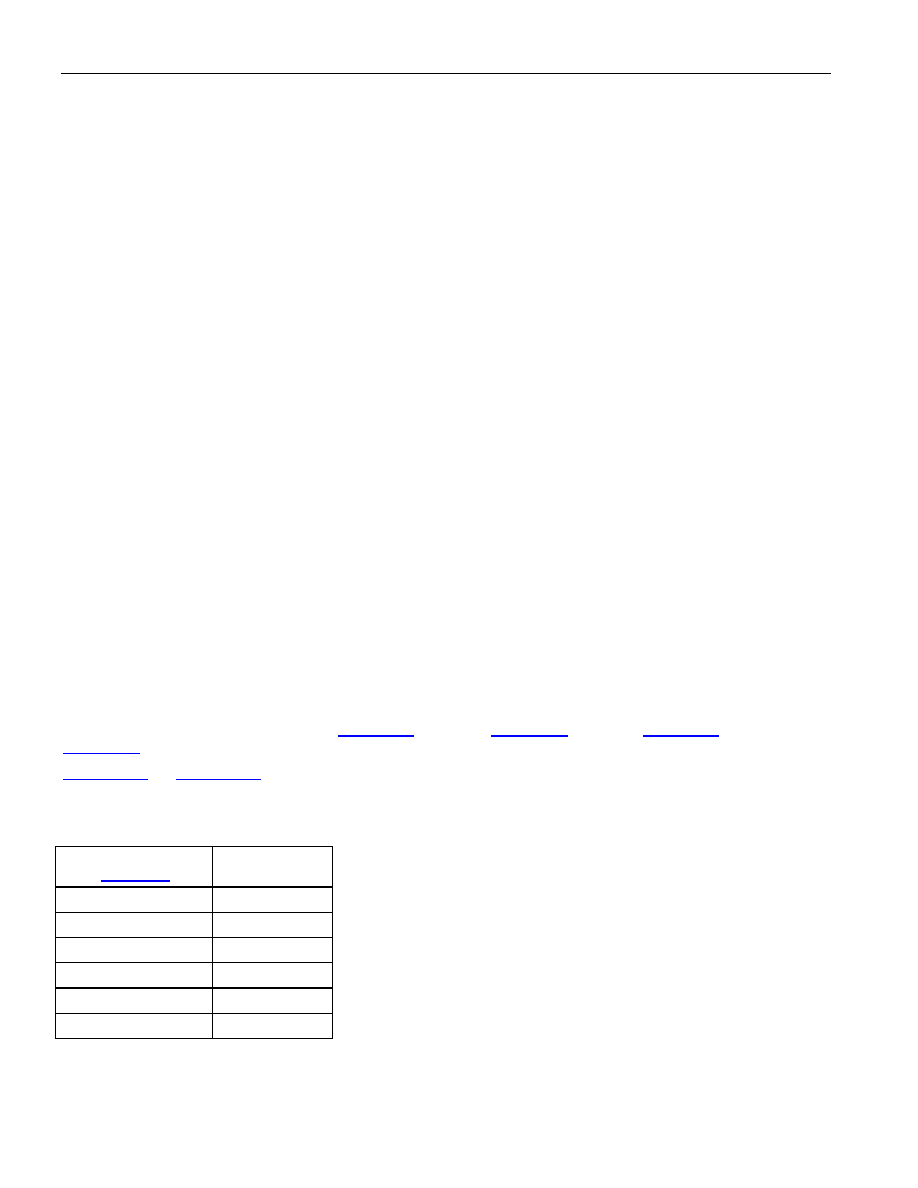- 您現(xiàn)在的位置:買賣IC網(wǎng) > PDF目錄4561 > DS3164N (Maxim Integrated Products)IC QUAD ATM/PACKET PHY 400-PBGA PDF資料下載
參數(shù)資料
| 型號: | DS3164N |
| 廠商: | Maxim Integrated Products |
| 文件頁數(shù): | 21/384頁 |
| 文件大小: | 0K |
| 描述: | IC QUAD ATM/PACKET PHY 400-PBGA |
| 產(chǎn)品培訓(xùn)模塊: | Lead (SnPb) Finish for COTS Obsolescence Mitigation Program |
| 標(biāo)準(zhǔn)包裝: | 1 |
| 類型: | PHY 收發(fā)器 |
| 應(yīng)用: | 測試設(shè)備 |
| 安裝類型: | 表面貼裝 |
| 封裝/外殼: | 400-BBGA |
| 供應(yīng)商設(shè)備封裝: | 400-PBGA(27x27) |
| 包裝: | 托盤 |
第1頁第2頁第3頁第4頁第5頁第6頁第7頁第8頁第9頁第10頁第11頁第12頁第13頁第14頁第15頁第16頁第17頁第18頁第19頁第20頁當(dāng)前第21頁第22頁第23頁第24頁第25頁第26頁第27頁第28頁第29頁第30頁第31頁第32頁第33頁第34頁第35頁第36頁第37頁第38頁第39頁第40頁第41頁第42頁第43頁第44頁第45頁第46頁第47頁第48頁第49頁第50頁第51頁第52頁第53頁第54頁第55頁第56頁第57頁第58頁第59頁第60頁第61頁第62頁第63頁第64頁第65頁第66頁第67頁第68頁第69頁第70頁第71頁第72頁第73頁第74頁第75頁第76頁第77頁第78頁第79頁第80頁第81頁第82頁第83頁第84頁第85頁第86頁第87頁第88頁第89頁第90頁第91頁第92頁第93頁第94頁第95頁第96頁第97頁第98頁第99頁第100頁第101頁第102頁第103頁第104頁第105頁第106頁第107頁第108頁第109頁第110頁第111頁第112頁第113頁第114頁第115頁第116頁第117頁第118頁第119頁第120頁第121頁第122頁第123頁第124頁第125頁第126頁第127頁第128頁第129頁第130頁第131頁第132頁第133頁第134頁第135頁第136頁第137頁第138頁第139頁第140頁第141頁第142頁第143頁第144頁第145頁第146頁第147頁第148頁第149頁第150頁第151頁第152頁第153頁第154頁第155頁第156頁第157頁第158頁第159頁第160頁第161頁第162頁第163頁第164頁第165頁第166頁第167頁第168頁第169頁第170頁第171頁第172頁第173頁第174頁第175頁第176頁第177頁第178頁第179頁第180頁第181頁第182頁第183頁第184頁第185頁第186頁第187頁第188頁第189頁第190頁第191頁第192頁第193頁第194頁第195頁第196頁第197頁第198頁第199頁第200頁第201頁第202頁第203頁第204頁第205頁第206頁第207頁第208頁第209頁第210頁第211頁第212頁第213頁第214頁第215頁第216頁第217頁第218頁第219頁第220頁第221頁第222頁第223頁第224頁第225頁第226頁第227頁第228頁第229頁第230頁第231頁第232頁第233頁第234頁第235頁第236頁第237頁第238頁第239頁第240頁第241頁第242頁第243頁第244頁第245頁第246頁第247頁第248頁第249頁第250頁第251頁第252頁第253頁第254頁第255頁第256頁第257頁第258頁第259頁第260頁第261頁第262頁第263頁第264頁第265頁第266頁第267頁第268頁第269頁第270頁第271頁第272頁第273頁第274頁第275頁第276頁第277頁第278頁第279頁第280頁第281頁第282頁第283頁第284頁第285頁第286頁第287頁第288頁第289頁第290頁第291頁第292頁第293頁第294頁第295頁第296頁第297頁第298頁第299頁第300頁第301頁第302頁第303頁第304頁第305頁第306頁第307頁第308頁第309頁第310頁第311頁第312頁第313頁第314頁第315頁第316頁第317頁第318頁第319頁第320頁第321頁第322頁第323頁第324頁第325頁第326頁第327頁第328頁第329頁第330頁第331頁第332頁第333頁第334頁第335頁第336頁第337頁第338頁第339頁第340頁第341頁第342頁第343頁第344頁第345頁第346頁第347頁第348頁第349頁第350頁第351頁第352頁第353頁第354頁第355頁第356頁第357頁第358頁第359頁第360頁第361頁第362頁第363頁第364頁第365頁第366頁第367頁第368頁第369頁第370頁第371頁第372頁第373頁第374頁第375頁第376頁第377頁第378頁第379頁第380頁第381頁第382頁第383頁第384頁

DS3161/DS3162/DS3163/DS3164
10.5.6 Trail Trace
There is a single Trail Trace controller for use in line maintenance protocols. The E3-G.832 and PLCP framers can
use the trail trace controller and it is shared automatically since the E3-G.832 and PLCP framing can not be
enabled at the same time.
10.5.7 BERT
There is a Bit Error Rate Test (BERT) circuit for each port for use in generating and detecting test signals in the
payload bits. The BERT can generate and detect PRBS patterns up to 2^32-1 bits as well as repeating patterns up
to 32 bits long. The generated BERT signal replaces the cells or packets from the system interface when the BERT
is enabled by setting the PORT.CR1.BENA.
The cells or packets from the system interface will still be processed using the same bit rate as when the BERT
was not enabled. Any transmit cells will be simply discarded when the BERT is enabled, and any cells or packets
on the line interface will be processed and sent to the system bus when the BERT is enabled. The TDENn and
RDENn pins will still be active but the data on the TSERn pin will be discarded when the BERT is enabled.
10.5.8 Fractional Payload Controller
The Fractional Payload Controller allows the user flexibility to control sub-rate datastreams. The Fractional
Payload Controller performs fractional overhead/payload data multiplexing. Fractional overhead is sourced from
either an internal register or the external interface. The allocation of the DS3/E3 payload is also controlled either
internally (internally controlled mode) or through the external interface (externally controlled mode).
The third option is Flexible Mode, which allows the user to externally multiplex payload and overhead, bypassing
the Fractional Payload Controller.
10.5.9 PLCP/Fractional port pins
The PLCP/Fractional port pins have multiple functions based on the framing mode the device is in as well as other
pin mode select bits.
10.5.9.1 Transmit PLCP/Fractional port pins
The transmit PLCP/Fractional pins are TSOFIn / TOHMIn, TPOHn / TFOHn / TSERn, TPOHENn / TFOHENIn /
TPDENIn, TPOHSOFn / TSOFOn / TDENn / TFOHENOn, TPDENOn, TPDATn, and TPOHCLKn / TCLKOn /
TGCLKn. They have different functions based on the framing mode and other pin mode bits. Unused input pin
functions should drive a logic zero into the device circuits expecting a signal from that pin. The control bits that
configure
the
pins’
modes
are
PORT.CR2.FM[5:0],
PORT.CR3.TPFPE,
PORT.CR3.TSOFOS
and
PORT.CR3.TCLKS.
Table 10-18 to Table 10-24 describe the function selected by the FM bits and other pin mode bits for the
multiplexed pins.
Table 10-18. TSOFIn / TOHMIn Input Pin Functions
FM[5:0]
Pin function
0XXX00 (FRM)
TSOFIn
0XXX1X (FRM)
TSOFIn
0XXX01 (OHM)
TOHMIn
1XX0X1 (OHM)
TOHMIn
1XX0X0 (UFRM)
Not used
1XX1XX (UFRM)
Not used
相關(guān)PDF資料 |
PDF描述 |
|---|---|
| AMC22DRYN-S93 | CONN EDGECARD 44POS DIP .100 SLD |
| AMC22DRYH-S93 | CONN EDGECARD 44POS DIP .100 SLD |
| 24LC00-I/SN | IC EEPROM 128BIT 400KHZ 8SOIC |
| 24AA08T-I/MNY | IC EEPROM 8KBIT 400KHZ 8TDFN |
| HMC35DRYI-S13 | CONN EDGECARD 70POS .100 EXTEND |
相關(guān)代理商/技術(shù)參數(shù) |
參數(shù)描述 |
|---|---|
| DS3166 | 制造商:Maxim Integrated Products 功能描述:6 PORT ATM/PHY 676-TEPBGA - Trays |
| DS3166N | 制造商:Maxim Integrated Products 功能描述:6 PORT ATM/PHY 676-TEPBGA IND - Trays |
| DS3168 | 制造商:Maxim Integrated Products 功能描述:8 PORT ATM/PHY 676-TEBGA - Trays |
| DS3168N | 制造商:Maxim Integrated Products 功能描述:8 PORT ATM/PHY 676-TEPBGA IND - Trays |
| DS316CC-F8 | 制造商:Enhance Technology 功能描述:ULTRASTOR DS SPARE PART: ONE (1) 6G SAS JBOD CONTROLLER KIT - Bulk |
發(fā)布緊急采購,3分鐘左右您將得到回復(fù)。